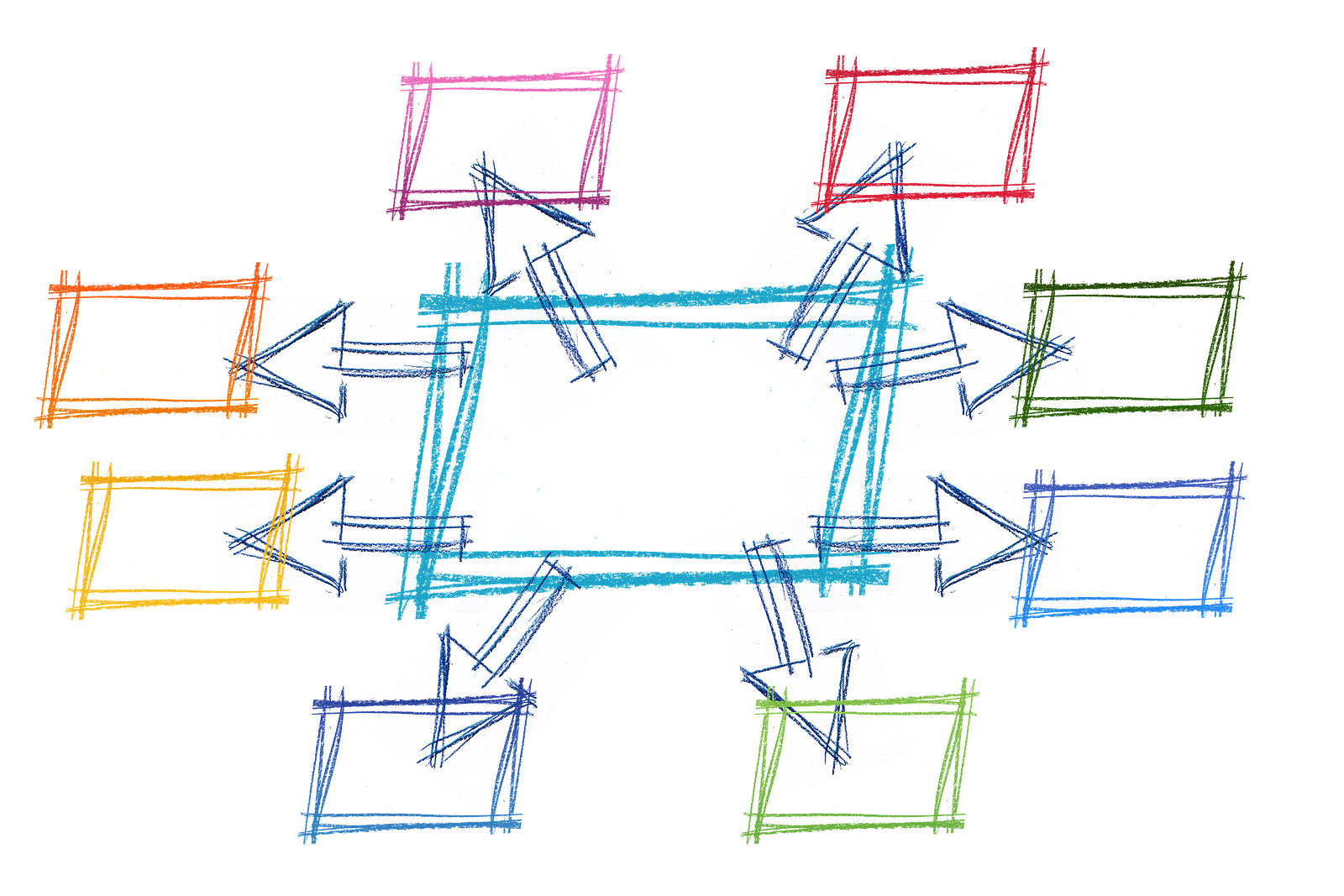15 points to consider before you buy or build an ideation platform
Sticky notes are great to quickly capture "ideas." They also help the team look busy and productive. But when it comes to an ideation channel you need some serious technology to capture, process, and diffuse ideas within your corporation.
But what makes a good ideation platform? What are the key principles and components that need to be there?
There are several commercial ideation platforms out there typically offered as a service. You can always consider designing and developing an in-house solution (although this is not recommended . It is also a costly and risky approach). Whatever your strategic approach is, your ideation technology and processes must encourage idea submission through proper communication, simplicity and transparency.
A good ideation platform should be seen as an always-on channel, ready to accept ideas at any time and intelligently handle them. Your ideation platform should be able to ensure these ideas are discoverable and manageable by the right teams, in the right context. The following points reflect key principles of an effective ideation channel — the characteristics that you need to consider before you buy or built:
1. Always accessible:
A good ideation channel should be always-on, always ‘open to ideas’. In many cases employees generate ideas as a response to a ‘call to innovate’ for example a hackathon, a brainstorming session or a programming challenge. But, on the other hand, employees should be encouraged to submit ideas on an ad-hoc basis, randomly, as ideas are being conceived. The ideation channel should be able to handle both supervizedand unsupervised ideation processes.
2. Everlasting ideas:
The technology should allow ideas to be always accessible and discoverable in the right business context. The principle here is that ideas should not expire, get auto-archived or deleted, unless the owner wishes to withdraw them. Thus, ideas are always "alive" and ready to be re-discovered in the right context, at the right time: instead of deleting ideas to reduce the "noise." You can prioritize them intelligently, against different business objectives and timelines.

3. Simplicity over bureaucracy:
Strict rules, multiple checkpoints and aggressive deadlines can kill innovation: what if the big idea comes out of context or out of time? The ideation channel and the underlying processes must be flexible, adaptive and efficient. It should be able to understand the content submitted by the user and automatically set the right context (instead of using a given context as a restriction).
4. ‘Seamless’ idea capture:
Less structure, input forms, validation rules and constraints, more automated classification, tagging, entity extraction and intelligent post-processing. Ideally, just a block of text should be enough . NLP components could automatically process it to extract entities. This would include the identify use cases, summarizing it, recommend optimized titles and classifing it based on the underlying ontology, patterns and other metadata available.
5. Context is optional:
A good ideation platform should accept ideas with or without context attached. An idea may be submitted as part of a particular event . For example an ideation contest, a brainstorming session, a presentation or a ‘call to innovate’ by the leadership of the corporation.
In all these cases, the idea has a particular context . The idea may be the reference of the source event, the topics, certain problems to be solved or the business objectives. In other cases the idea can be random, captured with no particular context: an ad-hoc discovery, a new product concept, a novel feature for an existing product and so on.
6. Transparency:
The ideation platform should provide full transparency on any change, decision point, collaboration event, prioritization or other significant update happening in the lifecycle of the idea.

7. Discoverability:
Ideas should be easily discoverable via both search and recommendation functions. In an obvious scenario, users such as CPO’s, product managers, engineers should be able to instantly search the ‘ideas store’ using full text search and measures of relevance.
In a less obvious scenario, the system should be capable of capturing the business context and make recommendations on its own: for instance, a product owner ‘connects’ the active product backlog to the ‘ideas store’ via APIs.
The ideation platform automatically captures the context of the product being built, as described in the product backlog, and recommends relevant, fresh ideas to the product owner. In a more complex scenario, the system uses the business context to identify key users (top performers, based on historical data on idea generation) who could significantly contribute to the particular product .
Then it would be recommend them to the product owner. In all cases, discoverability is much more than a powerful search engine. The ideation channel needs to be able to process streams of data, extract the business context and use it to make recommendations from the ‘idea store’ to the right people at the right time.
8. Controlled anonymity:
A good ideation channel should accept ideas with conditional anonymity , based on a time frame or other conditions. This allows the owner to ‘test’ the idea/ capture original feedback and thoughts without the obvious bias being introduced if the owner is known upfront.
9. Idea handling:
A good ideation channel should provide advanced operations such as Idea Merge, Extend and Split. Whenever a new idea is submitted (or, even better, during editing) specialized components analyze its similarity against the "idea store." In case of strong similarity there is a prompt to the involved users, suggesting the option to Merge those similar ideas.
The system could further propose a merged version while maintaining the original source ideas and their history. Another similarity-driven scenario is the ‘Extend’ operation: here the system identifies the strong similarity on the problem to be solved and the overall context. But the system also recognizes the difference on the proposed solution (and possibly a complementary nature).
In this scenario the prompt action is to ‘Extend the original idea.’ Ideas are grouped under a master idea. Finally, a split operation is proposed when an idea is too complex or covering multiple problems or use cases.
10. Collaboration:
This is a core aspect of the ideation culture. A good ideation channel must promote collaboration and provide functionality to allow users to easily and effectively share opinions, knowledge and advice — thus increasing the probability to further develop the idea.
11. Team formation:
As soon as an idea attracts interest, its owner might need to form a team to more formally explore the concept and possibly do some planning. This could happen informally (external to the ideation system) or formally by setting up the team within the system.
In the latter case, the ideation channel could also recommend the right colleagues to consider inviting and also support the end-to-end invitation process to simplify the formation of the team.
12. Idea versioning:
The ideation channel should be capable of maintaining a history of changes and properly version the idea throughout its life cycle. This also enables insights along with a clear representation of the history of the idea — including the major updates and important decisions.

13. Intelligent notification:
The major stakeholders in the process, are the idea and business owners. While it is clear who the idea owner is, the identification of the business stakeholder/owner could be become complicated in large corporations.
The business stakeholder could be any or all of the CPO, product owners, commercial managers, the R&D manager, up to the legal teams if IP is involved. A modern ideation channel should be able to capture the hierarchy of the corporation. The channel identifies the inner structures and particular roles and automatically identify the stakeholders based on relevance to the idea and the possible actions to be taken.
For instance, when a new idea is submitted, the system should be able to automatically raise personalized notifications to the right stakeholders, using also the most appropriate call-to-action and communication templates.
14. Business Reporting:
A good ideation channel must provide accurate reporting and insights. Executives should be able to instantly capture the levels of activity along with customizable KPIs across multiple dimensions. A set of well-defined performance dashboards can typically cover the majority of these business needs.
15. Information sharing:
Modern systems need to be open, to expose functionality and data through standardized APIs. This is the case also for the ideation channel. This includes: ideas, process performance, business insights and other objects need to be securely exposed to other corporate systems.
For example, a smart corporate environment could automatically query the ideation channel to retrieve and present most recent activities on selected screens within the building. It also includes email widgets could consume the APIs to get the most active users of the month and present them through a dynamic email signature.
This dynamically generated ideation summary to be shared as part of a regular news letter to subscribed users; or, leaderboards of top-performing users based on internal or external gamification programs.
Always consider the right context.
In all cases the above principles should be considered in the right context: not all of the item have the same importance while different prioritization is expected depending on the industry, the structure and the size of the company.
